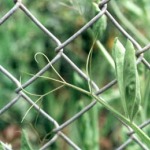
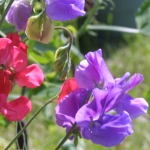

(E)-beta-ocimene, nerol, trans-alpha-bergamotene
linalool, geraniol, phenylacetaldehyde
Lathyrus odoratus (Fabaceae)
There are about 110 species of Lathyrus. Sweet pea is a popular garden flower because of its many colour variations, e.g. tricolore - red, white, blue. Moreover, the neat flowers on the straight, slender stalks have a very delicate sweet scent. This fragrance is much referenced in the perfumery literature, but it has never been extracted from the flowers commercially. As with many fragrant flowers (e.g. freesia), the amount of extractable odorants is minimal.
Porter et al. (1999) analyzed the floral fragrance from three sweet pea cultivars. A total of 48 compounds were detected in quantifiable amounts, 41 of which were common to all three cultivars. The most abundant compounds were consistently found to be (E)-beta-ocimene and linalool (approx. 30 % and 20%). Other major monoterpene alcohols were nerol and geraniol. The aromatic compounds were dominated by phenylacetaldehyde (approx. 5 %), and the predominant sesquiterpene was trans-alpha-bergamotene [28].
Etymology: Gr. láthyros, an old name for a leguminous plant; Lat. odoratus, fragrant.
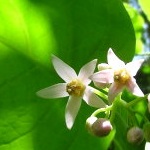
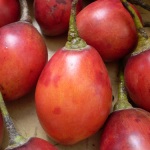
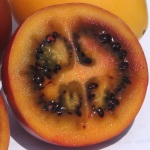
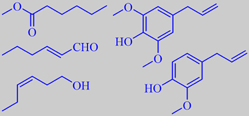
aroma volatiles from tamarillo
Cyphomandra betacea (Solanum betaceum) (Solanaceae) Tree tomato
The tamarillo is the edible fruit of a small tree or shrub of the Solanacean or nightshade family. Like potato and tomato it is a native to western South America.
The fresh-acidulous, salty-sweet, soft flesh of the ripe tamarillo is a delicacy, and the fruit is now cultivated in several countries. The deep purple seeds are rich in anthocyanins.
Torrado et al. investigated the volatile constituents of the tamarillo fruit pulp by liquid-liquid extraction followed by GC-MS. In total 46 compounds were identified. The major constituents were methyl hexanoate, (E)-2-hexenal, (Z)-3-hexen-1-ol, eugenol and 4-allyl-2,6-dimethoxyphenol [209].
Etymology: The name "tamarillo" was chosen in 1967 by the New Zealand Tree Tomato Promotion Council to distinguish it from the ordinary tomato and to increase its exotic appeal.
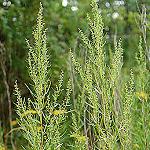
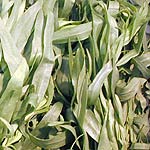
estragole, and (E)- and (Z)-ocimene
Tarragon
Artemisia dracunculus (Compositae) French Tarragon, Dragon Sagewort
This distinguished spicy herb grows wild along the shores of the great
rivers in the former Soviet Union. However, only the cultured variety,
named French Tarragon, has the characteristic powerful aroma as we know
it. The picture on the right shows the dried leaves.
The main component (ca. 60 %) of the essential oil of tarragon is estragole
(methylchavicol, 1-allyl-4-methoxybenzene). It has a fine, sweet, mildly
anisic odour (much softer than that of the isomer anethol).
Fairly high percentages of the terpene hydrocarbons (Z)-and (E)-ocimene
are also present in the oil [55].
Interestingly, the cyclomethylene analogue of estragole, recently marketed by Givaudan as Toscanol ®, has a powerful and linear anisic, sweet-spicy note resembling estragole, but with an additional liquorice and sassafras oil character and a touch of saffron, myrtle, opopanax and caraway. According to Givaudan, it can be used in all perfumery accords to add an anisic-agrestic, aromatic character, and it is useful as a substitute of Basil oil and Tarragon oil.
Toscanol ®
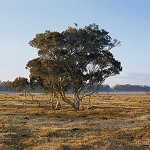
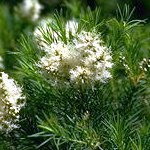
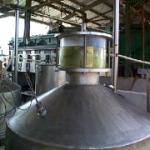
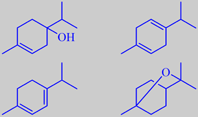
major terpenoids from tea tree oil
Melaleuca alternifolia (Myrtaceae)
Melaleuca is a genus of around 170 species of the Myrtle family. However, there are many unnamed and incorrectly named species and the true number is probably well in excess of 200. The majority of species are endemic to Australia but several occur to the north (e.g. Indonesia, New Guinea, New Caledonia, Malaysia).
Australian tea tree oil, obtained by steam distillation of the leaves and twig tips of Melaleuca alternifolia trees grown in plantations, is becoming an increasingly important commercial oil due to its biological activity. Tea tree oil has powerful antiseptic properties and bactericidal properties against a wide range of Gram-negative and positive bacteria, yeast and fungi. It has also been used to a small extent in perfumes and cosmetics. Australian tea tree oil is a mixture of terpenoids and sesquiterpenoids, with terpinene-4-ol (36 %), gamme-terpinene (20 %), alpha-terpinene (8 %) and 1,8-cineole (4 %) as the major components [18]. A distillery is seen in the photo on the right.
Many cases of allergic sensitivity to tea tree oil have been documented. However, it seems that fresh tea tree oil is actually a very weak allergen and that the compounds responsible for the development of allergic contact dermatitis are due to degradation caused by photo-oxidation in poorly kept oils [19].
The Australian tea tree industry is now in serious trouble following the loss of confidence caused by the SCCP Opinion (EU Commission), see Cropwatch!
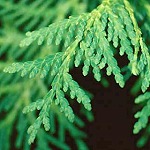
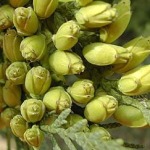
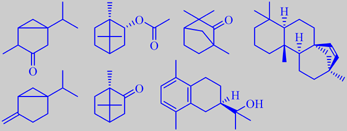
major constituents of thuja oil (see text for explanation)
Thuja occidentalis (Cupressaceae) Eastern Arborvitae, Northern Whitecedar
The evergreen conifers of the genus Thuja of the cypress family includes five species from northern Asia and North America. They are scrubs or trees with short, scale-like leaves. The seedlings, however, have needle-shaped leaves. T. occidentalis, T. plicata and T. standsishii in many varieties are common ornamental trees in gardens and parks. T. plicata may reach a height of more than 60 m and its soft and resistant, red-brown wood is used for various outdoor purposes (and for guitar soundboards).
The thujas contain aromatic oil. Thuja oil or 'cedar leaf oil' is produced on a small scale by steam distillation of the fresh leaves and twigs of T. occidentalis. It has a strong, characteristic sweet-camphoraceous odour. Its main ingredient (up to 67 %) is the bicyclic terpene ketone 4-methyl-1-(1-methylethyl)bicyclo[3.1.0]hexane-3-one, called thujone (upper left structure). Other major constituents are bornyl acetate, fenchone, the diterpene beyerene, sabinene and camphor (five next structures) [192]. The major sesquiterpene alcohol found in the essential oil of
T. occidentalis is d-occidol (last structure) [193] [194]. Thuja oil is claimed to have interesting antimicrobial and immunostimulating effects, but thujone is toxic in higher dose.
The Swiss company Firmenich offers the tricyclic ketone Plicatone as a perfumery ingredient with a natural, herbal, aromatic, woody and fruity character reminiscent of thuja.
Plicatone ® (Firmenich)